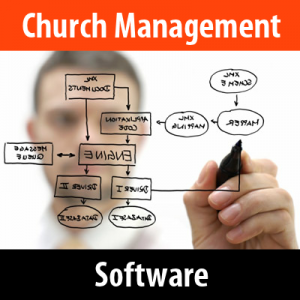At Sunago we get this question every week! I wish there was a simple clear-cut answer I could response with. But here are a few observations to consider:
- Church communities do NOT compete with social networks such as Facebook or Twitter.
- Member demographics matter: A church on-line community in itself will not provide the incentive for a non-internet user to climb aboard.
- Church communities provide the underlining support for growing, vibrant church communities; they do not provide the motivation. They are not the WHY!
- Church communities in larger, mature churches improve communication and reduce administrative functions allowing for more serving.
- Mature church communities will provide a support structure for people to serve/conduct church business, communicate, find opportunity, and obtain support.
- Church communities are not about being recognized! That’s a refreshing, real difference!
Initially, we must ask why will members use this feature? What’s in it for them?
- We ask our customers to look within their organizations to define their internal communities. Examples can include staff, pastors, elders, child-care, hospitality, men’s mentoring, women’s support, MOPS, house churches, missional communities, and any number of volunteer groups.
- Next the why or better yet what’s in it for them, yes each of them. Some would say, can we find a more transparent, participative support system to conduct a number of supporting activities. A few examples are captured in the table below.
Community Supporting Activities
- Staff: How to find people/groups/volunteers
- Coordination: Mobilize volunteers
- Organization: Prepare, conduct, review results for key meetings, financial planning
- Share information: Documents, thoughts, actions
Child Care
- Organize for support services
- Plan for and recognize need
- Train, qualify, certify, etc.
- Schedule
Hospitality
- Support/schedule/plan
- Review results from previous services
- Follow-up
Missional Communities
- Communication/awareness/opportunity
- Event Planning
- Sharing
- Haves/needs
- What’s in it for our members?
Members
- Finding people
- Maintain profiles for both individuals and families
- Register children
- Share
- Find opportunity
Quite frankly though, this usually isn’t enough. This is often the group (all members) where churches attempt to start! The cry goes out, “members, jump in, participate, carry on discussions an please don’t forget to fill out you profile to include registering you kids for children’s check-in.” In some cases we have sign-up drives around kids registration.
- Stop for a minute and review some of the common mistakes.
- Recognize the need to define the why/what’s in it for us?
- Be aware of the fact that there is a “tipping point.” That’s a simple way of saying that a church on-line community needs to gain enough traction to really get members serious about participation.
- Acknowledge that sharing interests, communication, and deepening relationships comes last, long after a tipping point has been reached and members start down an adoption path that often started with simply filling administrative needs/wants.
- Thinking that personal information placed in Facebook is secure.
A simple adoption framework
- First, start slow.
- Recognize the value of many of the CORE (membership management) features used today!
- Assess the needs by individual community
- Define the most significant needs and start with your staff and key volunteers.
- Identify the connectors – staff/volunteers/members who use social communities and are what Malcolm Gladwell defines as connectors.
- If possible, find a church that is a year ahead of you in adopting on-line community. Discuss your needs, general direction, and initial plans.
- Create a bridgehead. Select a couple groups with identified needs and connectors. Be reasonable! Using the Sunago solution, we often see Staff and Key Volunteers start by using Sunago’s CORE (membership management) and Community Modules.
- Create a simple plan, execute, and continually evaluate/adjust. You just may want to take on kids registration; that is after success with other communities.
- Expand on success creating an adoption plan that may spell out different tracks for different church communities and you are off and running!
Please remember, your supporting on-line community and your software provider do not provide the whys. They can help you with the framework, training, and best practices/process. The essential preliminary work that leads to success is in your court.
Give us a call; we can help you get started! Sunago integrated solution provides CORE (Membership Management), Community, Children’s Check-in, and Giving Administration.

